4 Ways to Grow a Healthy Garden without Pesticides
You should see the shock on people’s faces when they ask how I control insects in my garden and I reply, “I don’t use pesticides.”
Of course, I clarify that statement by explaining that I will, if necessary, resort to organic pesticide methods — but that’s only in extreme cases. Otherwise, I’ve managed to pull off growing a successful garden without pesticides.
How is this possible?
I do believe some luck is involved, but I can point to four factors I believe have played a critical role in my lack of devastating pest problems.
A Healthy Beneficial Insect Population
Call me naïve, but I believe in the perfect garden, nature itself–when given an environment in which to thrive–takes care of most major pest issues.
Let’s consider aphids for a moment. Though they can do devastating damage, they also have plenty of natural predators. I’ve never had a major problem with aphids, I believe due to my healthy ladybug population, along with other beneficial insects such as lacewings and syrphid flies — many of which you may never notice. These beneficial insects prey on aphids.
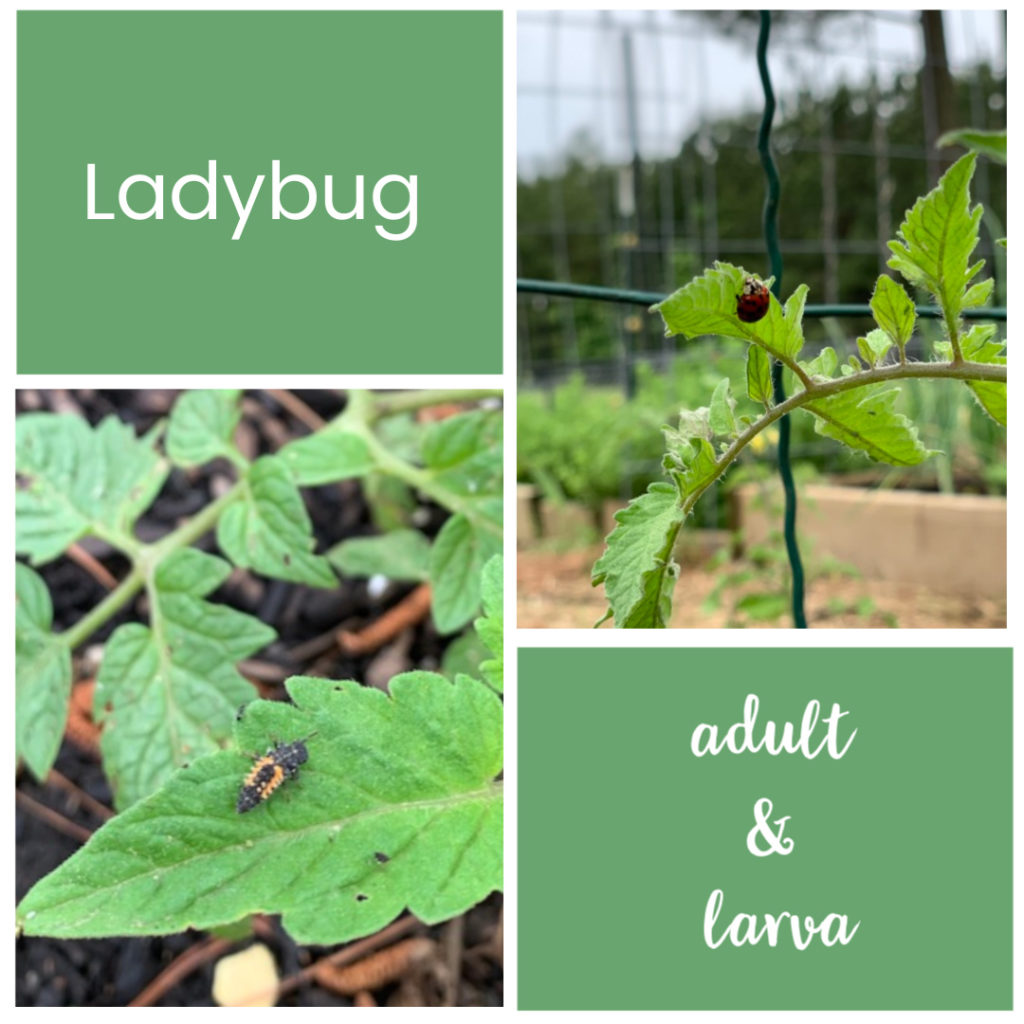
But to grow a healthy beneficial insect population, chemicals can’t be applied to the garden. Those same chemicals–and even organic pesticides–that kill the bad bugs kill the good ones, too.
But if aphids do get the upper hand, check out organic methods for aphid control here.
I also let vegetables flower and go to seed, which attracts beneficial insects. When a carrot, onion, cilantro, basil, or any other plant past its harvest-able stage sends up a flower stalk, it may not look appealing, but if it attracts an army of beneficial insects, it stays.
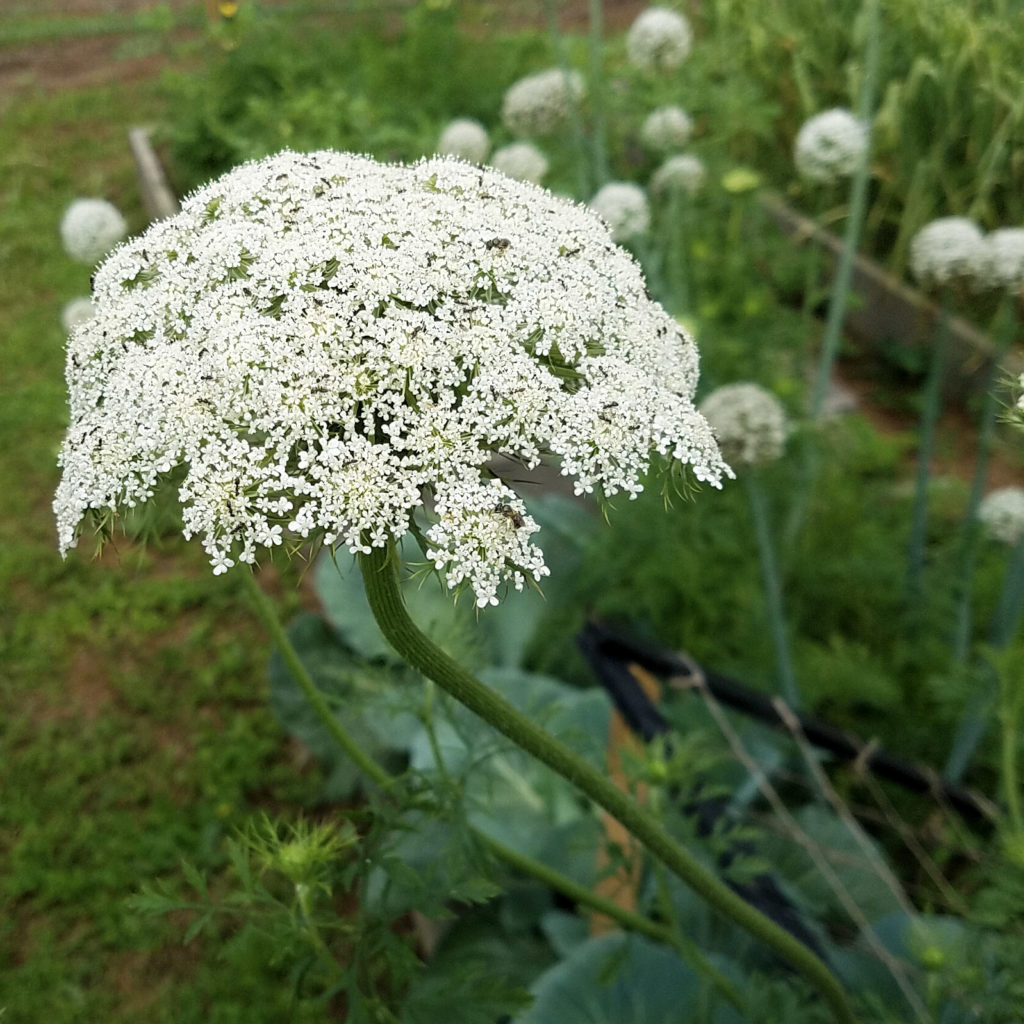
In my mind, zero pesticides means that the good insects that prey on the bad ones can thrive and grow. Any good predator needs prey, right? If we get rid of all the bad bugs, the good ones won’t have any food, and when you need the good bugs the most, they’re nowhere to be found.
*links below may contain affiliate links, which means if you click through and make a purchase, I will earn a commission at no extra cost to you.
Healthy Plants
In general, healthy plants can withstand slight attacks from pests. To foster healthy plants, I only use organic fertilizer and work on feeding the soil rather than feeding the plants with synthetic fertilizers.
According to Michael Pollan’s book In Defense of Food, gardens fed with chemical fertilizers aren’t as able to withstand attacks by pests as those grown under organic conditions.
I also work on creating an environment where the plants aren’t unduly stressed. For example, I mulch deeply in order to regulate moisture, which prevents drought stress during dry periods and moisture overload during wet ones.
A new approach I’ve learned to hasten the healthy growth of plants is to plant them at the optimal time. For example, one year I planted red beans shortly after the first frost passed. Just a row over, I planted green beans — with similar growth habit — a few weeks later. The red beans struggled with the fluctuating temperatures and rain, but the green beans grew larger than the earlier-planted red ones. It’s easy to tell which plant is more stressed.
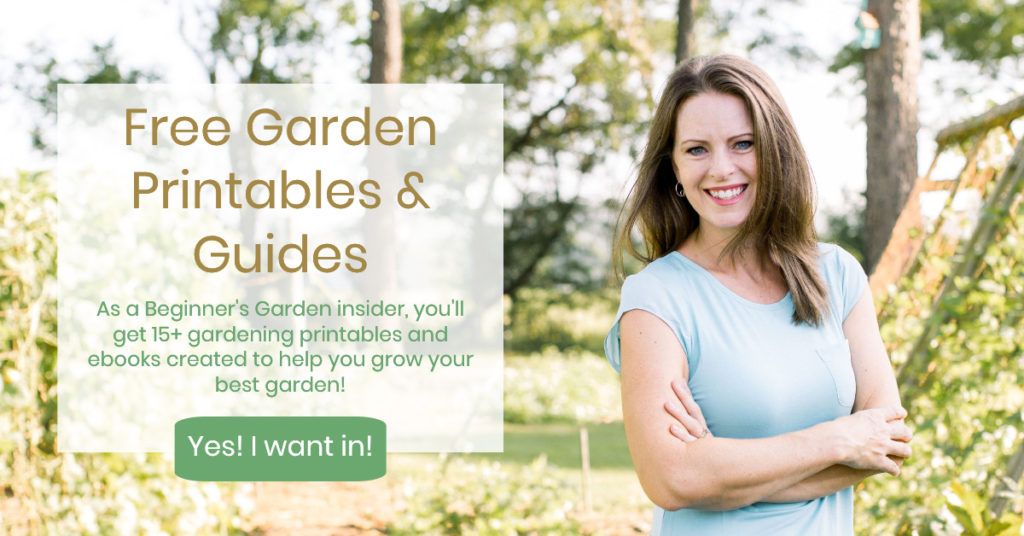
Companion Planting to Avoid Pesticides
There’s a lot of buzz in the garden world about certain plants repelling certain pests, but little scientific evidence has been found to back it up. However, gardeners believe it.
I can’t say for certain, but I do know when I plant basil near my tomatoes, for example, I don’t have problems with the tomato hornworm. Marigolds are said to offer similar protection to tomatoes and other plants. Here are other common methods of companion planting for pest control.
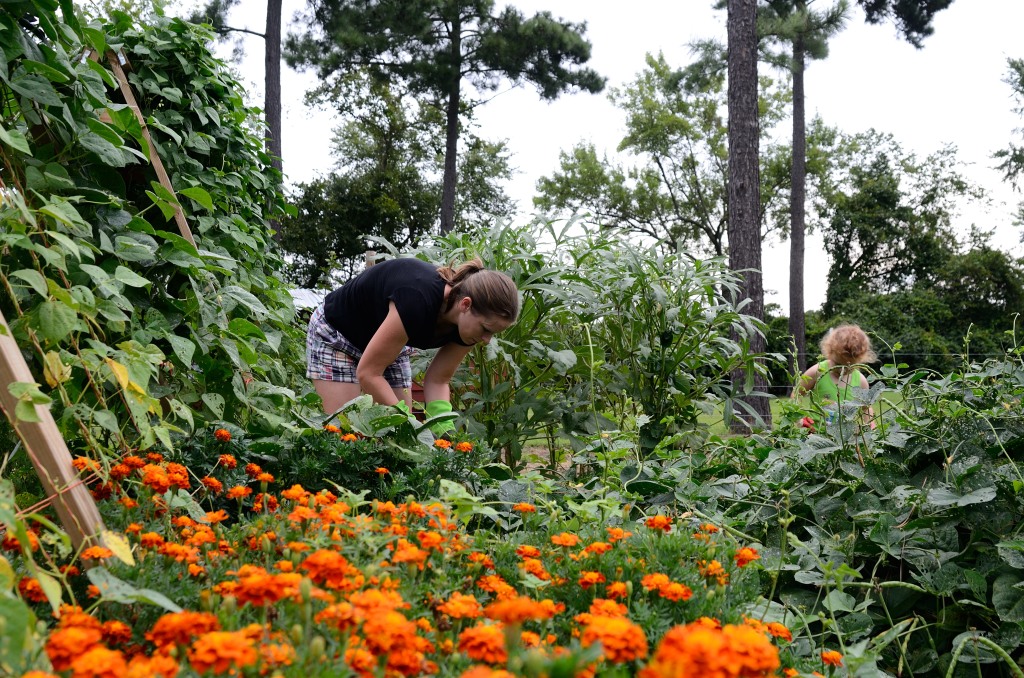
Let the Scary Critters Stay
Spiders, snakes, and toads eat the enemies of my vegetables and fruits. When I see a spider, I rejoice. I know they’re good for my garden and they are welcome there. If I see a snake, I get chills up my spine but as long as it is a harmless garden snake (which it always has been), it gets to stay, too. Toads are always a welcome sight in my garden, and I leave them alone.
But, just one application of glyphosate (the active ingredient in Round-up) can decimate this important population.
When Bugs Get the Upper Hand
You must be wondering, then, do I not have any pest problems? Yes, I have had pest problems. My most significant problem has occurred at the hands of the squash vine borer, which has caused the death of almost every one of my squash, zucchini, and pumpkin plants.
Though I’m still testing different prevention methods, I’ve learned to plan several plantings of squash and zucchini throughout the season, and I’ve found the later plantings miss the squash vine borer’s life cycle in my area.
I also had issues with the Colorado Potato Beetle during my first two years. Hand-picking the beetles and squashing their eggs on the leaves by hand yielded the best results. In the last five years, I haven’t seen a beetle one. I’m still perplexed about that, but I’ll take it. My only thought is perhaps my large bird population gets hold of them before I see them.
It all comes down to accepting some of damage for the greater benefit of the little ecosystem going on in my garden. The healthier my garden is, the more likely it will take care of itself. And when my garden is healthy, I can sustain a garden without pesticides.
Do you get overwhelmed with garden planning?

Subscribe here for my best tips to plan your garden in just 7 days -- all for FREE.
Plus, I'll send you my "In the Garden E-mail" on Fridays, periodic updates on garden resources relevant to you, and you'll receive access to my entire bank of free garden downloads!
You are also agreeing to our privacy policy.

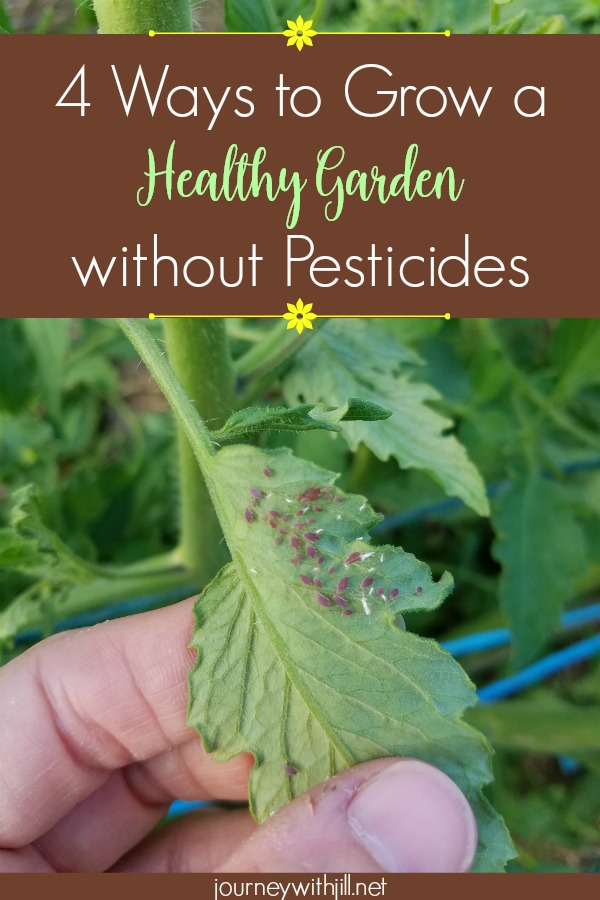
Oh, I’m going to try the marigold idea. I had basil near the garden, but something ate the plant clean up. Out where we live, the biggest garden problems are deer and rabbit, so I see some kind of fencing in our future. Thank you for these tips!
Hi Jill,
Thank you very much for all the hard work to help other gardeners!
What do you do about fire ants? I keep getting lots of mounds in my container and raised beds. I’m new to gardening in Northeast TX (gardened for 30 years on the TX coast) and the deluge of Spring rains plaguing the North TX area for the past few years resulted in my plan to use raised beds. The fire ants disrupt my planting, weeding, and I suspect kill some of my transplants.
I have issues with fire ants as well. I usually try to work around them, but if they get bad in a location, I’ll pour boiling water on the mound, provided the mound isn’t too close to any plants at the time. Sometimes it works, sometimes it doesn’t. Here’s an article you may find more information from that may help: https://joegardener.com/podcast/fire-ant-control/
I struggle with slugs and snails in my large patio garden. We’ve had a lot of rain, and I can’t keep up with the infestation. Any ideas would be great!
Though I don’t personally fight snails to the degree that I have to do more than hand-pick, I have heard that a homemade beer trap works great. Look that up online; it sounds fairly easy.
The ideas shared were great on how to grow plants without pesticides. A better way to grow plants naturally. Thank you for sharing your tips and ideas that will help us. Good job!